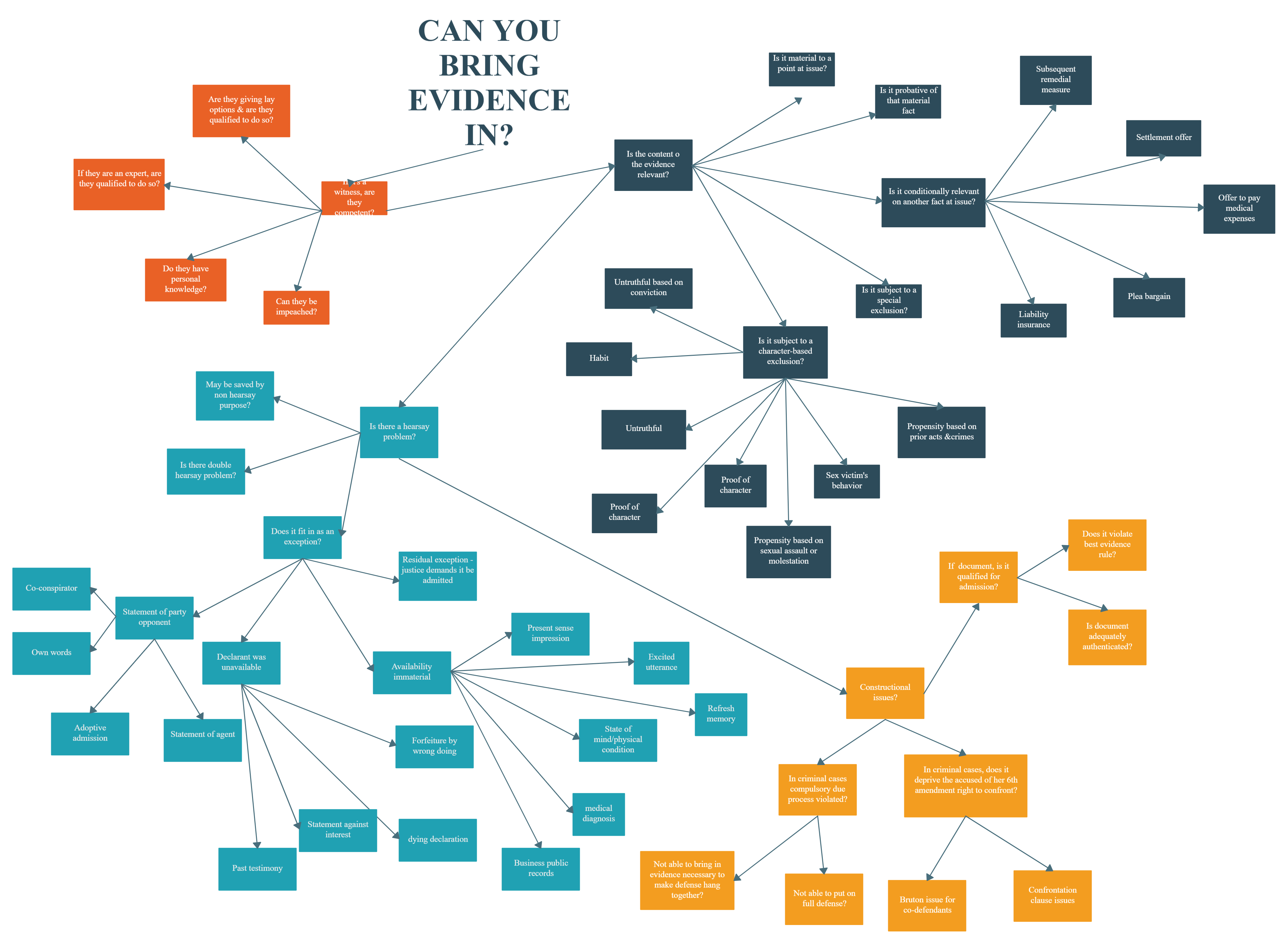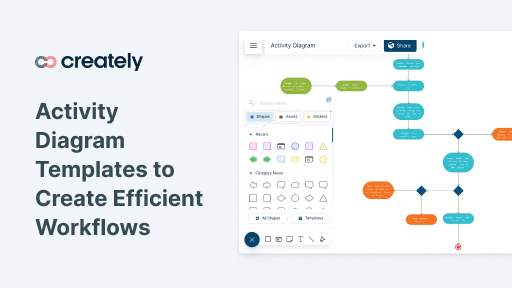A large part of maximizing your legal team’s productivity, reducing unnecessary costs and meeting the needs of your clients is based on how smooth and simple your processes are. If you have the correct tools, improving your legal processes for better results will be quicker.
Of the many possibilities of applying visualizations, we’ve chosen to focus on three main ways you can use visualization in your law firm; to inform and educate your clients, to optimize your internal processes and to prepare for litigation. Following we’ve listed a few visual techniques that you can use in each of these areas.
Explaining Processes to Your Clients
When it comes to explaining, showing really does more justice than describing, especially to a client who might be agitated or in distress.
Flowcharts/ Process Maps to Outline Legal Processes
When a client first engages a law firm for a case, they may expect a straightforward process to get to a judgment. However, there might be quite a few steps you need your client to be aware of. A flowchart that lists down the steps of the trial process can help you prepare your client for what’s to expect rather easily.
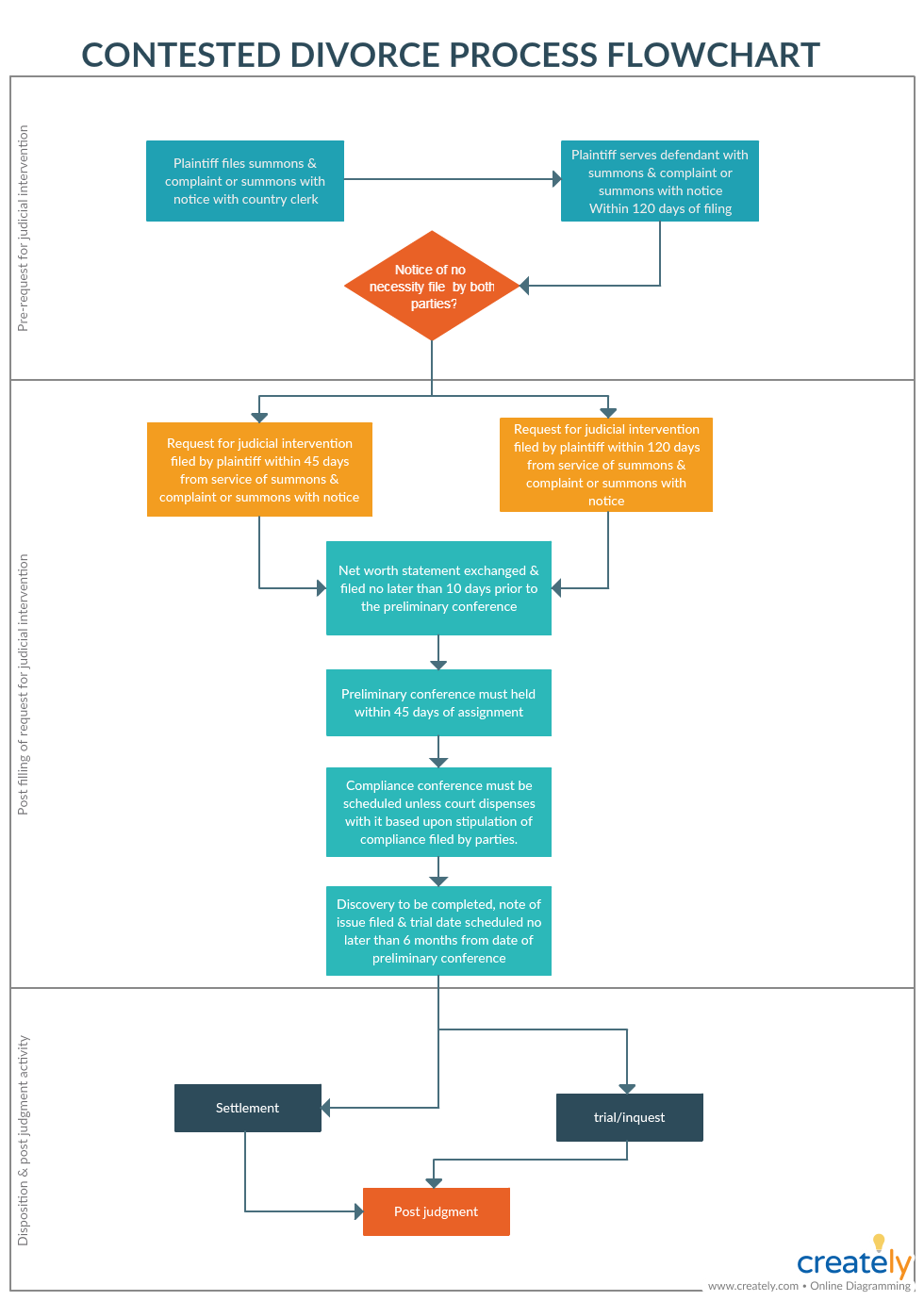
Contested Divorce Process Flowchart Template (Click on the template to edit online)
Accident Reconstruction Diagrams
A great way to revisit how a traffic crash occurred with your client is through an accident reconstruction diagram. While they help identify causes behind a collision, it’s the best way to clearly document your client’s claim.
A few tips you need to remember when drawing an accident reconstruction diagram are
- Add all the traffic signals and the speed limits
- Mention the street names
- Add text boxes and explain the reactive actions of the involved drivers
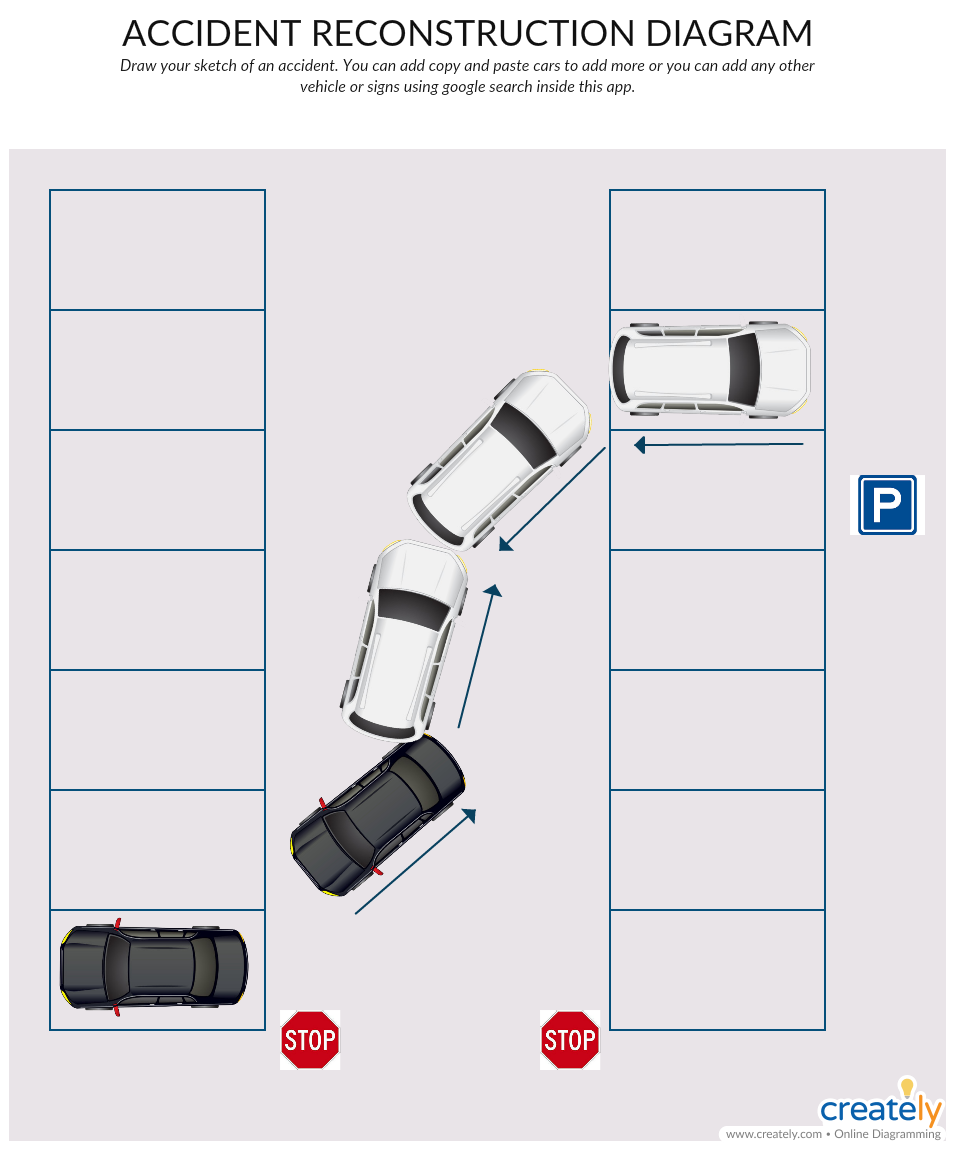
Accident Reconstruction Diagram Template (Click on the template to edit online)
Flowcharts for Estate Planning
Another scenario that is quite confusing when defined in a legal contract as text is estate planning and wills. Your client may have several estate planning options. Wouldn’t it be easier, if you can just show him/ her they are with the use of a flowchart like the one below?
An estate planning flowchart would basically explain who will receive your client’s properties after they die and when they will receive it. It will give them a quick overview of what can happen and help them come up with a carefully considered plan.
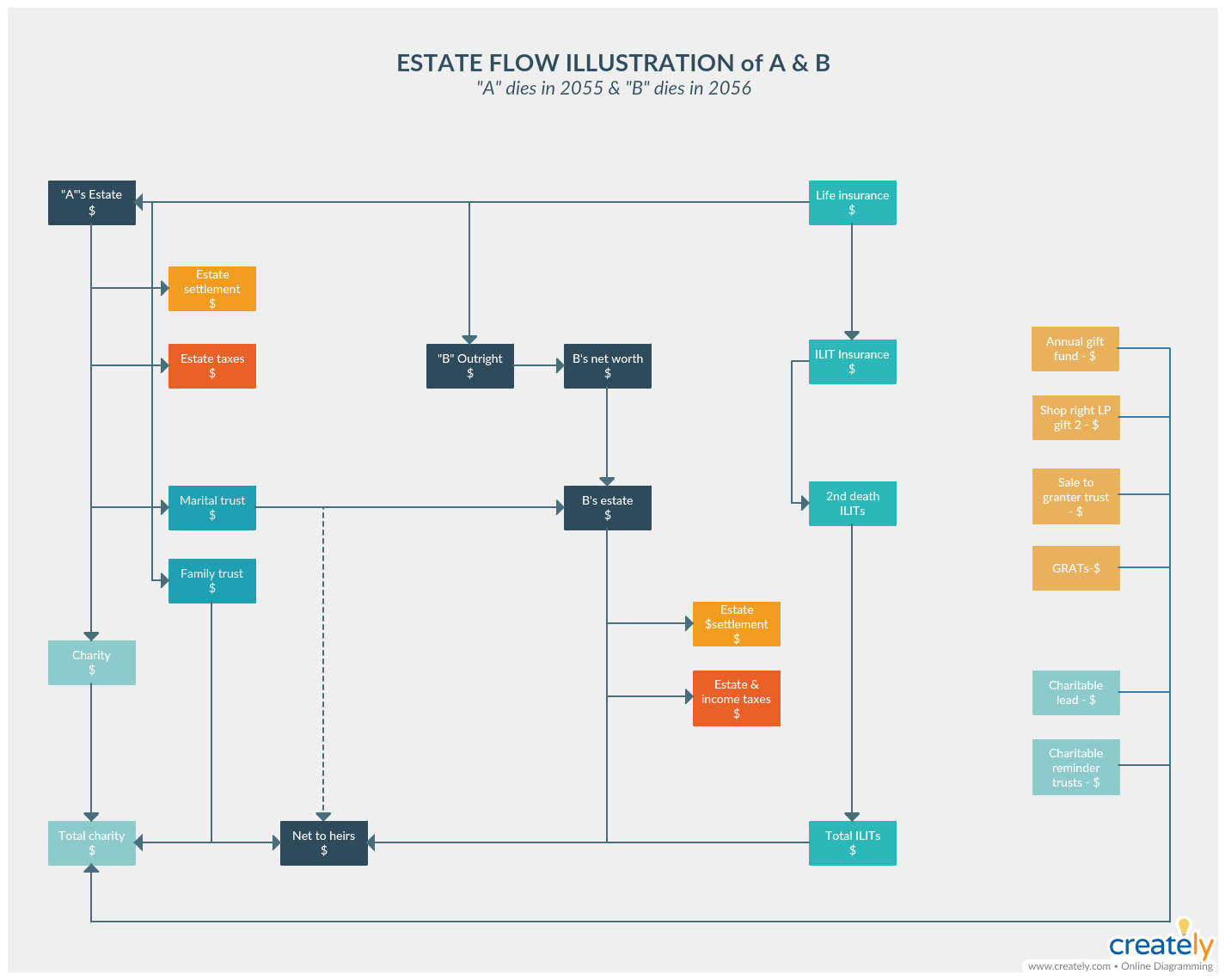
Estate Planning Flowchart Template (Click on the template to edit online)
Optimizing Internal Processes
Improving your internal processes is key to delivering high-quality work and remaining profitable. Visualization techniques are a great way to analyze what’s actually slowing down your progress and identify areas for improvement.
Process Maps to Outline Legal Procedures
The field of law is home to many processes that are both simple and complex. If there’s a quick overview or a synopsis of the process steps, it can help anyone who wants to refer to it. The ideal tool for the job is a Flowchart or process map.
Not only that of legal procedures, but you can use process maps to map out the internal processes in your law firm. It’s a great way to identify bottlenecks and blockers that may be slowing down your productivity and come up with a process improvement plan.

Criminal Case Process Map Template (Click on the template to edit online)
Diagrams to Highlight Duties of Assistants/ Paralegals
Each individual in your legal team has a duty to do and how efficient they are in performing that will have a significant impact on the success of your law firm. An effective way to make sure that everyone’s on the right path is to get them to track their work using a diagram that lists their duties like the one below.
Tip: You can use it as a guide to train new assistants and help them get hold of the internal processes. Along with it, you can hand them an org chart of your law firm that visualizes the reporting structure and the hierarchy among the employees.
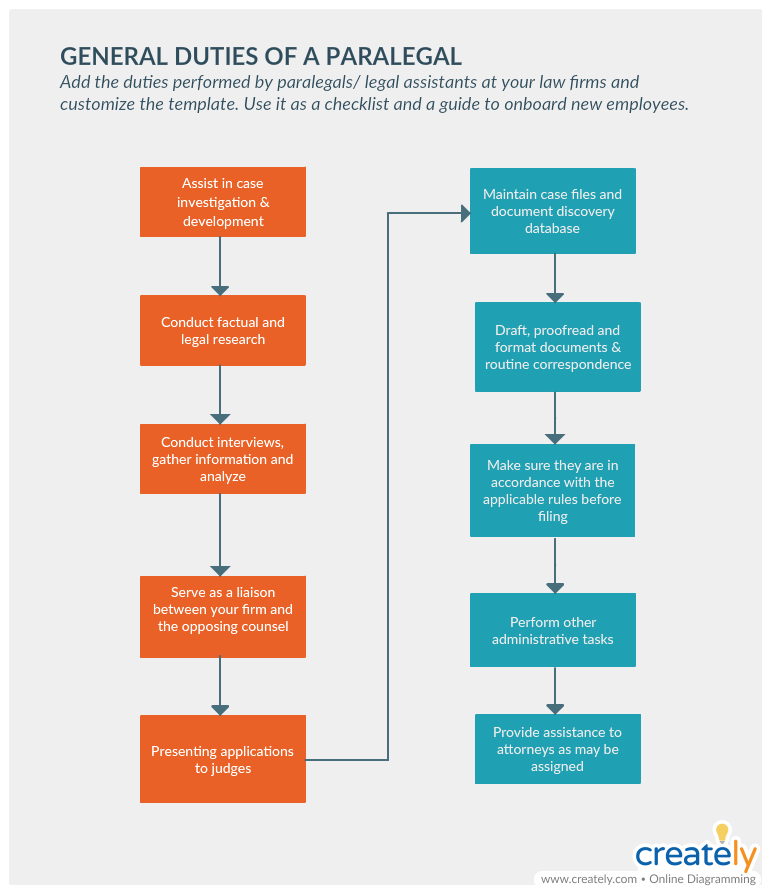
General Duties of a Paralegal Diagram (Click on the template to edit online)
Preparing for a Court Hearing or Trial
As a lawyer, there’s much to do when it comes to preparing for a court trial. From sketches, outlines of your key delivery to evidence preparation. And diagrams can help you do this efficiently.
Mind Maps to Do Research
It’s important that you have a greater understanding of the case than your opponents – if you are planning to win, that should be the case. Mind maps are an effective research tool that helps you organize information. And you can use one to help prepare yourself for the case. Some of the information you can gather with a mind map
- Who will be the key witnesses?
- What point will the opposing counsel make with each witness?
- What points should I make with each of these witnesses?

Trial Preparation Mind Map Template (Click on the template to edit online)
Mind Maps to Organize Your Evidence
The evidence you present during the trial will include all sorts of documents, witnesses, and their dispositions, as well as the witnesses who are likely to be presented by the other side. Using a mind map, you can list them down – use the mind map below as your evidence checklist.
Add More Legal Process Improvement Techniques to the List
We’ve covered how you can go about legal process improvement using diagrams like flowcharts and mind maps. Adding them in your briefs or using them to assist you when explaining your processes to clients will both streamline your work and save you time.
We’d like to hear from you about the various other ways you improve legal processes in your law firm. Contribute to our list by sharing your tips in the comment section below.
Also, don’t forget to check out our latest post on sales process improvement. If you are targeting to double your sales before the end of this year, these techniques can help you get there faster.
